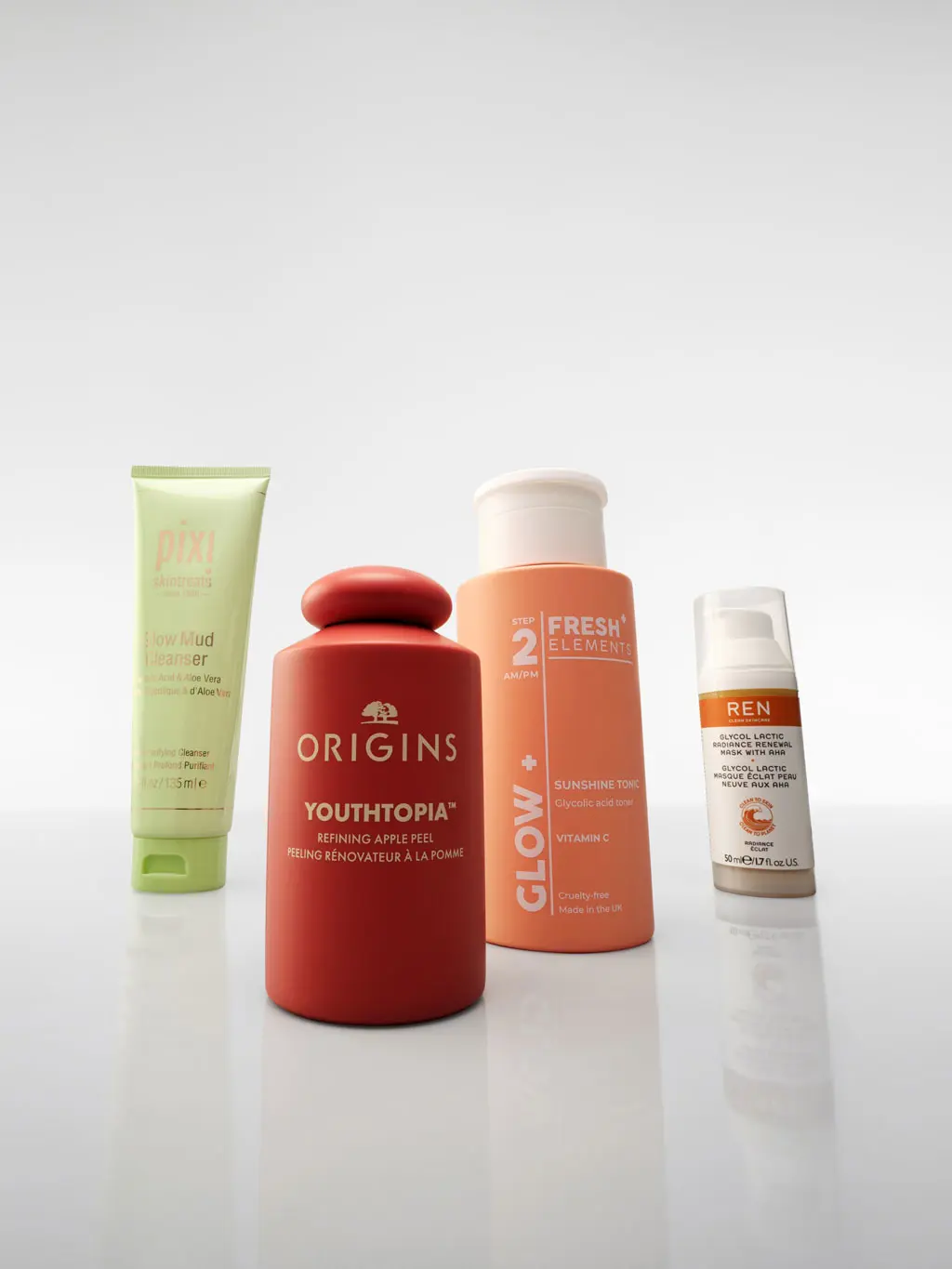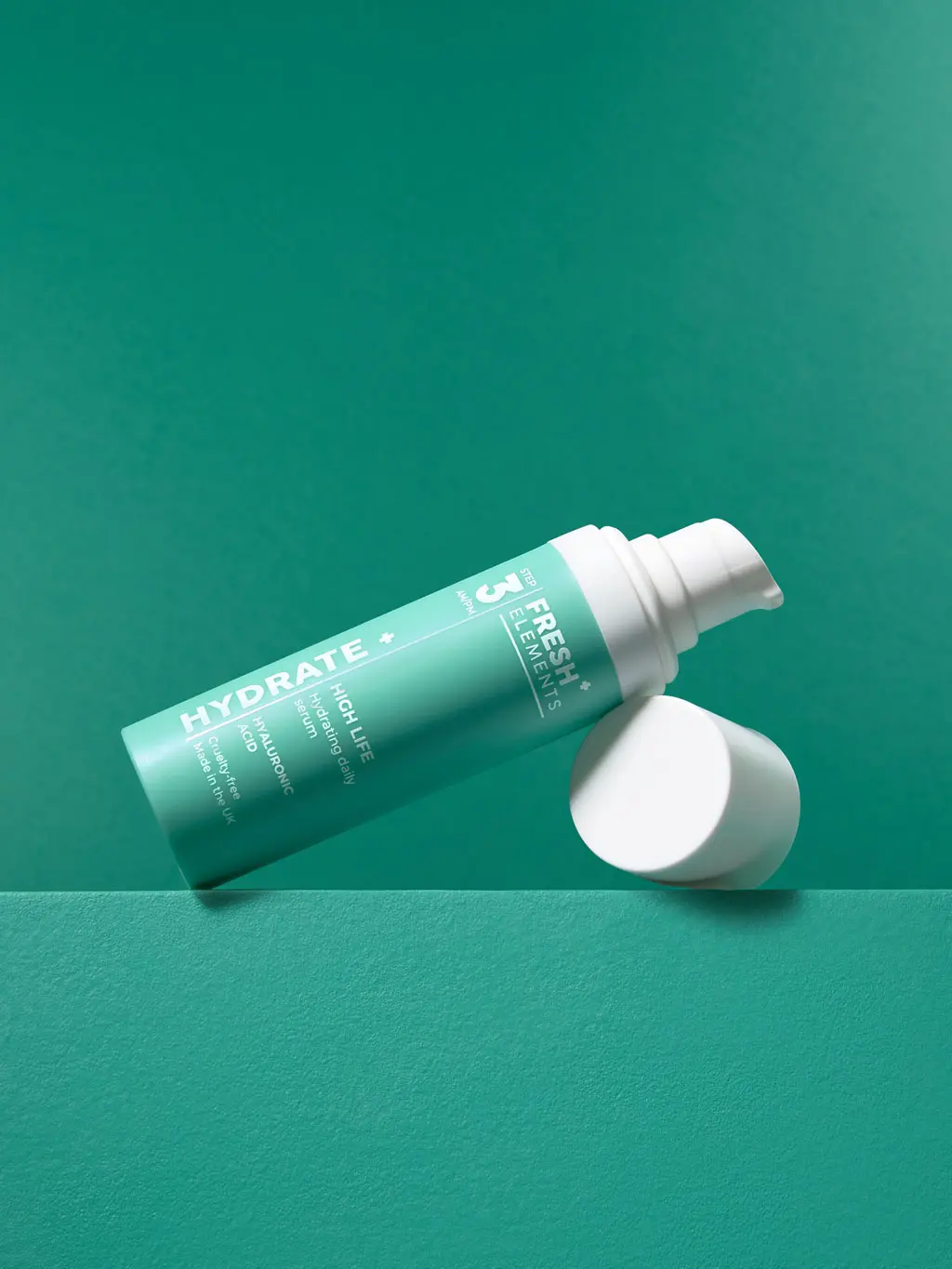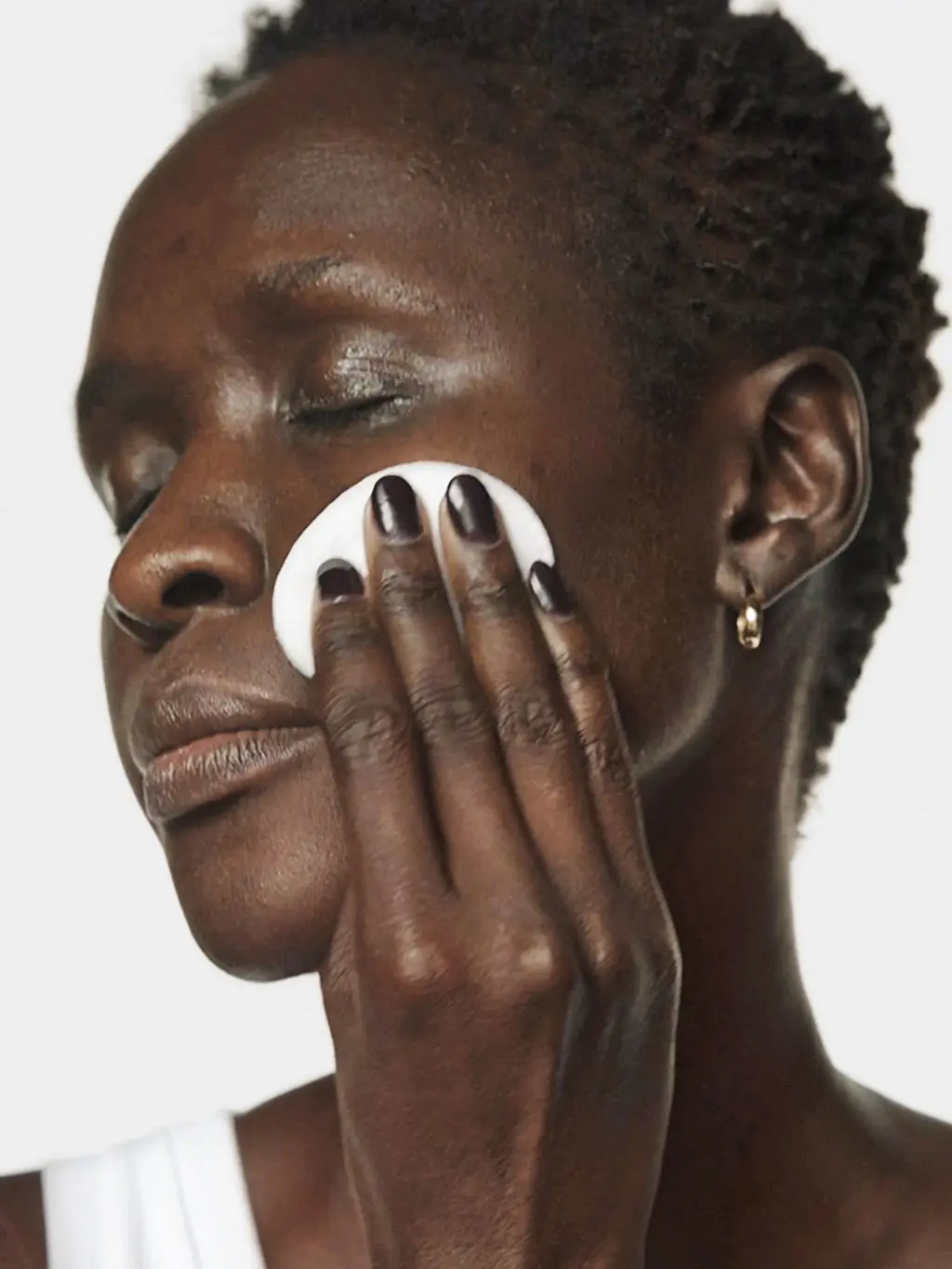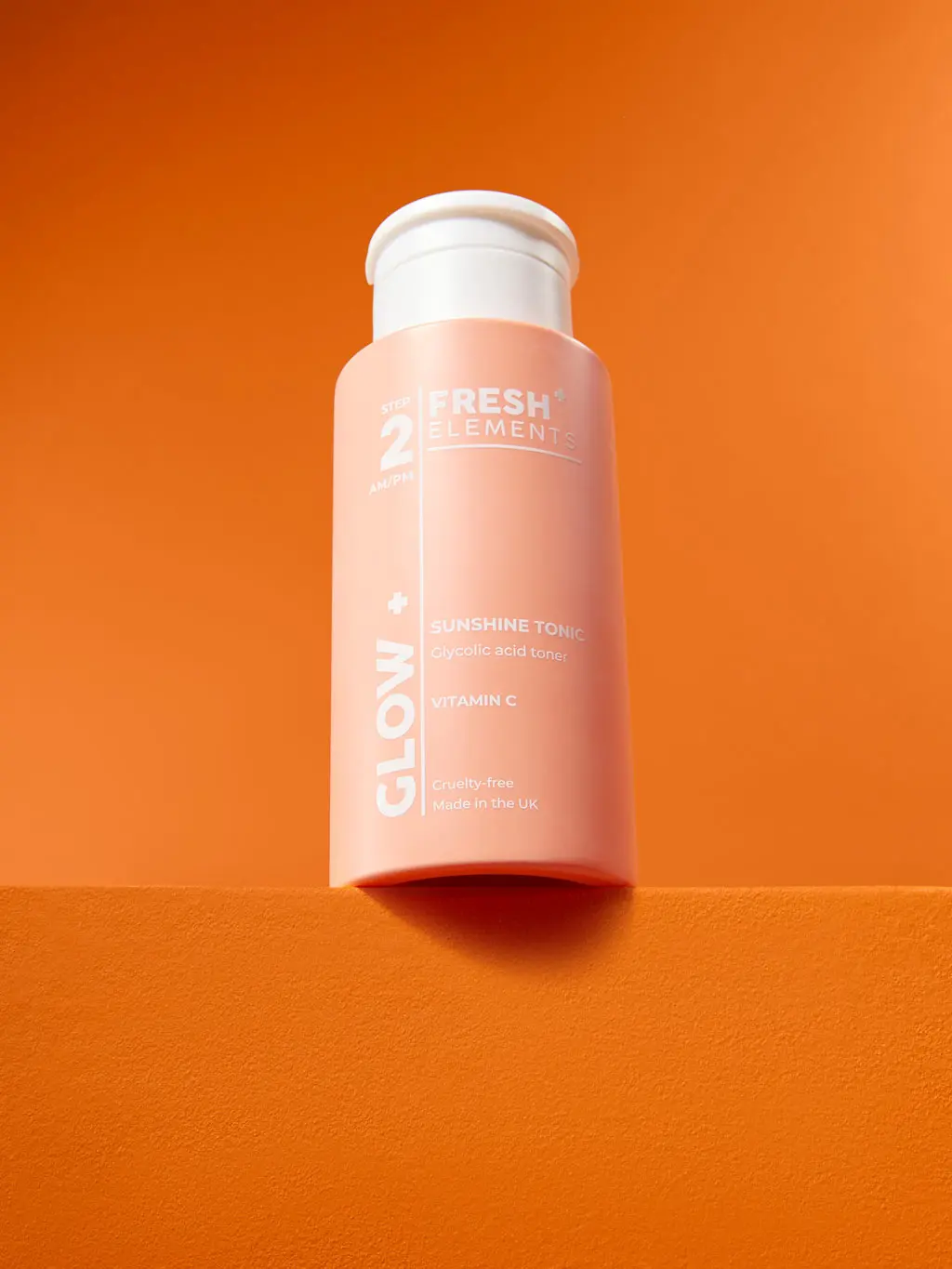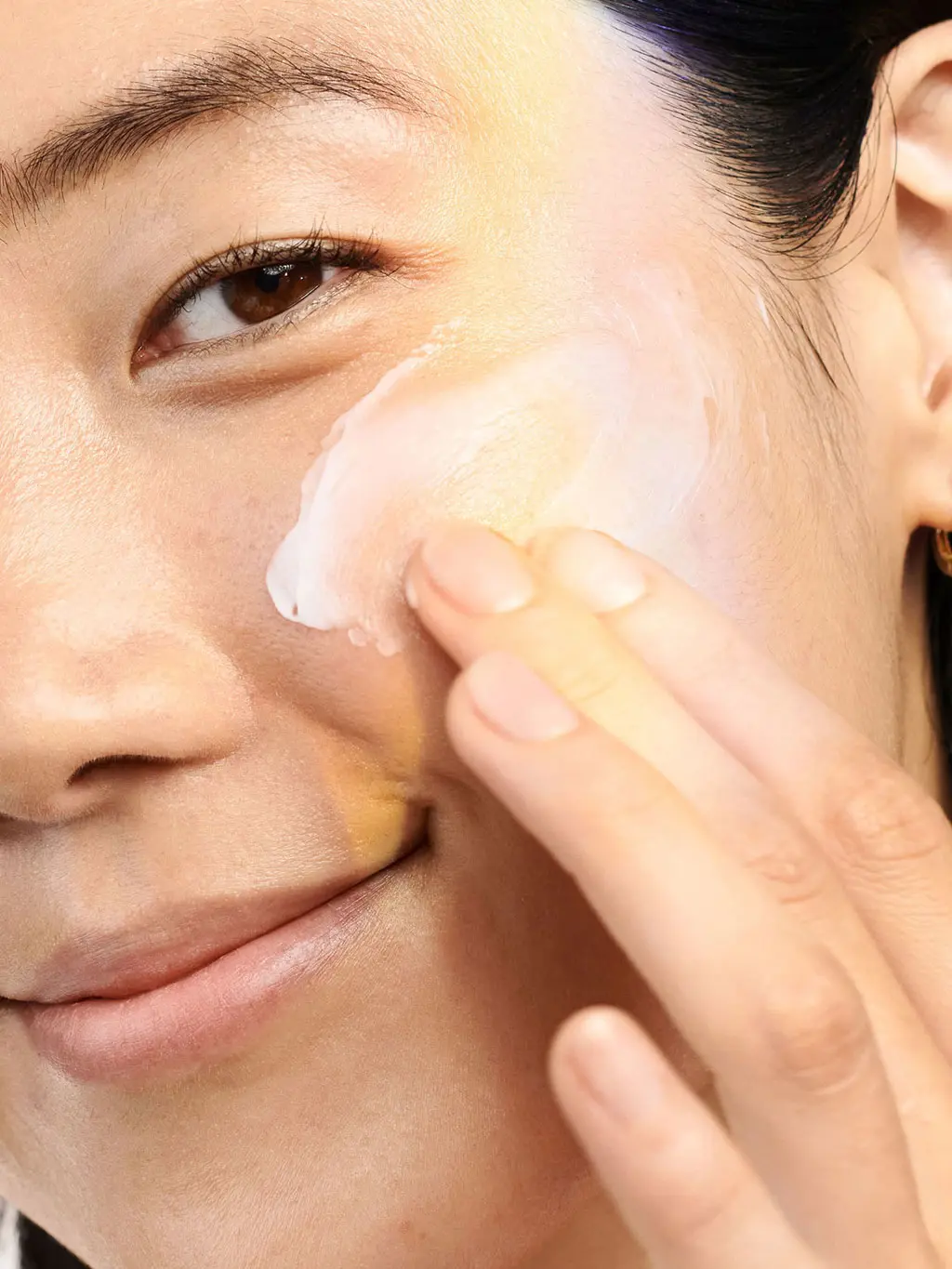Guide to Skincare Acids: From Glycolic Acid to Vitamin C
Content editor
Ellie SpicerWhat are skincare acids and which are best for your skin?
From the hydrating properties of hyaluronic acid to the resurfacing power of glycolic acid, skincare acids are a potent step in your skincare routine. Most skincare acids come in three categories: AHAs, BHAs and PHAs, also known as alpha, beta, and polyhydroxy acids. Each acid targets a different skincare concern, however they all exfoliate the skin by removing dead skin cells and encouraging cell turnover. Hyaluronic acid, by contrast, is a hydrator, flooding the skin with moisture for barrier protection and all-day suppleness.
Skincare acids come in an array of facial treatments and formulas. Consider your skin type, its sensitivity and your skincare goals when shopping for acids. Remember that most skincare acids resurface the skin therefore introduce new products into your routine slowly and carefully, monitoring for any irritation or breakouts.
What does hyaluronic acid do and how to use it?
Hyaluronic acid is the hero hydrator that shows up in an array of serums, masks, moisturisers and more. It can hold up to 1,000 times its weight in water, effectively trapping hydration in the skin for a plump, dewy appearance that lasts. It works for all skin types but if you have dry and dehydrated skin, you’ll most benefit from introducing a hyaluronic serum into your routine. If you’re seeing early signs of aging, incorporating this acid into your routine can help minimise the appearance of fine lines by boosting the overall moisture content in your skin.
Understanding how to use hyaluronic acid correctly will ensure you see the most impact. Apply in the morning and/or the evening before your cream moisturiser, but after any other acids or treatments. The molecules are so large that they could block any other products from reaching the deeper levels of the skin. You can read more about this miracle-working moisturiser in our full guide, here.
What does salicylic acid do and when to use it?
If you’ve ever experienced acne or breakouts, then you’ll likely know what salicylic acid does for the skin, but there’s more to this compound than direct spot treatment. Unlike hydrating hyaluronic acid, salicylic acid balances oils and gently exfoliates from deep within the lower dermis. It’s a brilliant addition to the skincare routines of those with oily, combination or blemish-prone skin, however anyone with periodic breakouts can use it. Salicylic acid also helps to banish blackheads – the trickiest of all spot types to treat – creating a smooth, clear canvas for whatever you layer on top of your base.
The best salicylic acids are found in cleansers, facial washes, topical treatments and toners. Cleansers and facial washes should be gently removed with lukewarm water, unless guided otherwise, while topical treatments and toners can be applied with a cotton pad or bud. Avoid using your hands directly onto oily or blemish prone areas as you may inadvertently transfer dirt and oils onto already compromised skin.
What is glycolic acid and how often to use it?
If you're wondering "what does glycolic acid do?", it helps to think of it a traditional physical exfoliator. Glycolic acid effectively sloughs away dead skin cells from the surface of the skin, improving overall skin texture and reducing dullness for a radiant, lit-from-within glow. There’s a reason our Fresh Elements glycolic acid toner is called Sunshine Tonic, after all.
So, "how to use glycolic acid?" we hear you ask. As with salicylic acid, you’ll find this glow potion in a number of products ranging from toners to moisturisers, serums and even eye creams. Be mindful of irritation when using this potent ingredient: start by incorporating one product into your routine several times a week, building in more if your skin remains happy.
What does vitamin C do for your skin and how often to use vitamin C serum?
You may be thinking "is vitamin C an acid?" and the short answer is yes. Also known as ascorbic acid, vitamin C helps to promote collagen production and works as a gentle antioxidant. It helps to repel environmental aggressors, like pollution and UV rays, that disrupt the skin’s natural balance and contribute to signs of ageing over time, all while enhancing your natural glow. Vitamin C can also help fade dark spots and brighten your overall complexion.
You’ll find vitamin C in topical treatments, serums, moisturisers and eye creams across the M&S Beauty Hall. Vitamin C is best used during the day to protect you while you’re out and about, but creams such as Clinique’s Even Better Clinical brightening moisturiser work overnight to ensure you glow from the moment you wake up. If you’re considering how often to use a vitamin C serum, follow the rule of starting slow and building to daily use.
Published 8.15.2025
Related Stories

8.19.2025
What is collagen?
It's a bold ingredient that promises results, but what exactly is collagen and how does it work on your skin, hair and nails? Read on to find out more
Read More
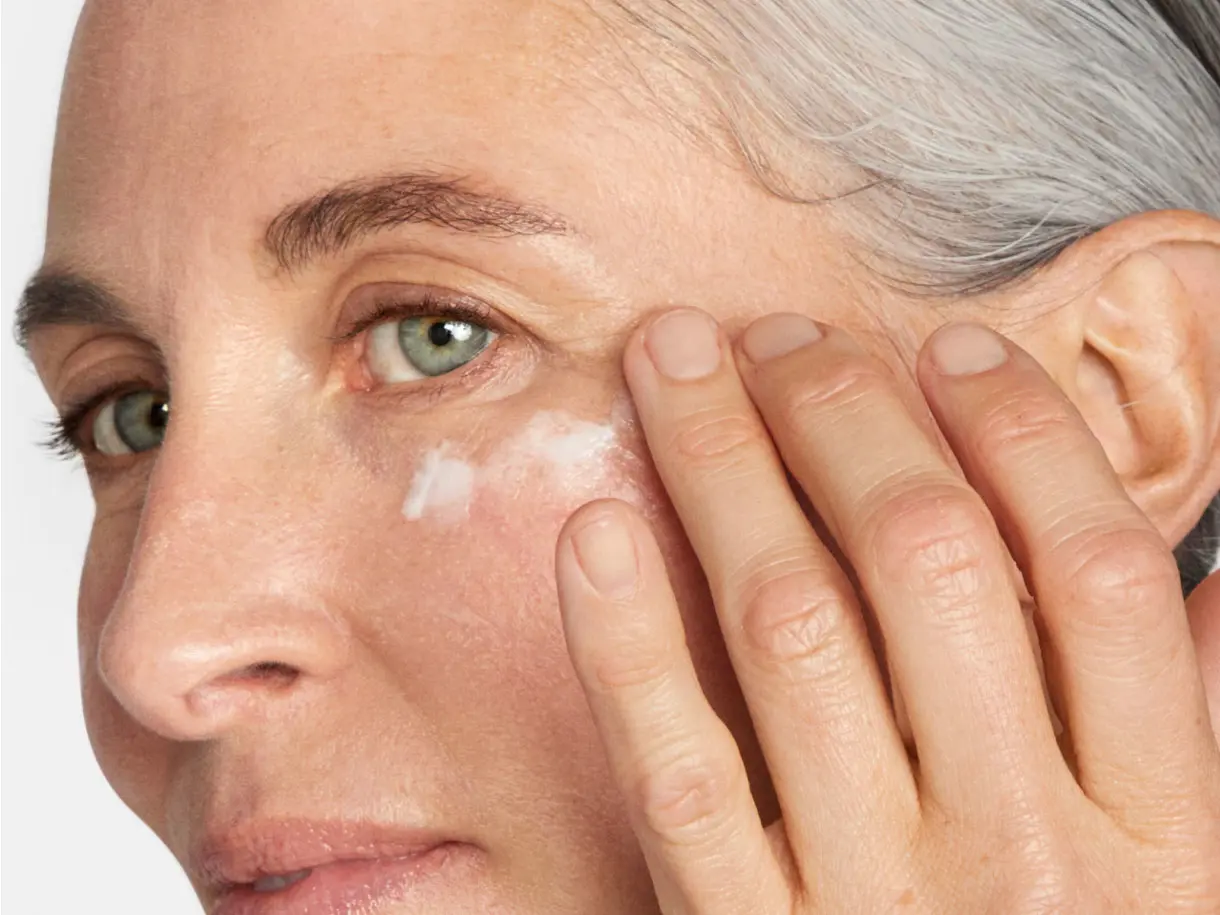
8.13.2025
How to get rid of dark circles
High-performance eye creams, illuminating concealers, and smart lifestyle shifts – this is your complete guide to banishing dark circles and restoring a fresh, wide-awake look
Read More

8.8.2025
Everything you need to know about sunscreen
Stay safe this summer with our sun protection guide, including why sunscreen is so important and when to apply it
Discover more

3.25.2025
The best skincare for your skin type
Wondering what skincare is right for your skin type? Read on to discover the best moisturisers, cleansers and treatments to suit your skin
Read More
